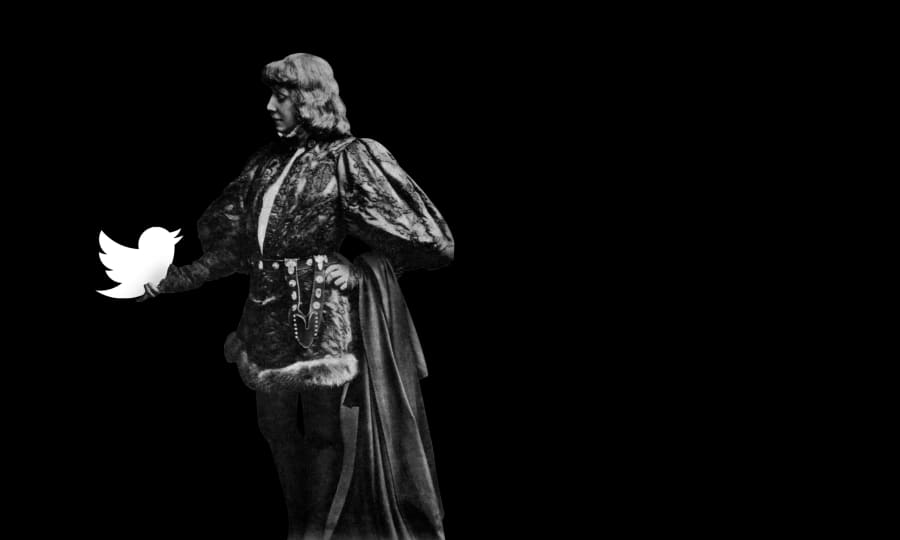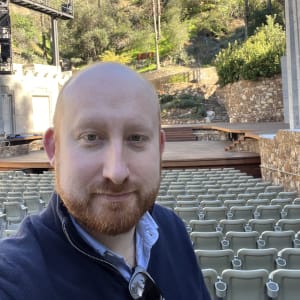Social Media in the Arts
Exploring key themes and trends using analytics and social media.
January 26, 2018
In preparation for taking part in a panel convened by Young People in the Arts in January 2018, I did some digging around various arts organisations’ analytics and social media feeds to pull out some trends and themes which I think are worth sharing.
Some of this came up in the panel event, and some occurred to me after the fact, so think of this as me getting the last word in, in blog form. > Social Media in the Arts is about Discovery, Community and Conversation
This is my golden triangle of social content for arts organisations: if your posts don’t sit within one or more of these areas of discovery, community, or conversation (or aren’t objectively independently funny/original/interesting to the reader/viewer/listener), don’t press the submit button.
Social media is one of the most important platforms for discovering information that we’ve ever had. I now know more about the day-to-day lives of long-lost university friends than my parents probably know about blood relatives. In the context of arts and culture, it’s an absolutely crucial way for your events, exhibitions and performances to form part of the digital cultural sphere.
But it’s no good just broadcasting your event listings onto your followers’ news feeds (“Hamlet opens on Tuesday”, “Last few tickets remaining” etc.). When this pops up next to a video of my friend’s toddler playing with their puppy, why would I care? Social content has to live up to its name and be able to sit within a broader conversation or theme within your community. For this you need to know your audience, know how to talk to them, and know what to say. Discovery is important, but only when it sits as a part of a larger community and conversation.
You need Trust and Permission to Succeed in Social
One of the key themes of the YPIA panel event was the importance of trust: not only building trust amongst your online community, but also within your organisation. This allows you to take advantage of opportunities for posts and content about topical themes and news stories.
There’s often a lack of shared understanding within organisations (not just arts and culture organisations, although we can be guilty of it too) about the type of content we want to promote and post, our tone of voice, and even who we’re talking to on our different social media platforms. Without this shared understanding, it’s impossible to know how far (or not) to push towards edgy, funny, original, cheesy (the list goes on) content. By mapping this out, together as a team, you can give yourself permission to create an original voice on your social platforms.
The Impact of Social Media for Arts Organisations is Underestimated
One of the first things that generally comes up when we look at this is that the impact of social media is generally under-reflected within arts organisations. There’s a really simple reason for this: most Google Analytics dashboards do not give the full picture of the impact of your social media activity. If you take a look at the standard Acquisition reports within Google Analytics, you’ll find that the traffic and conversions that are attributed to social platforms is probably lower than you would expect it to be, often accounting for substantially less than 5% of visitors and conversions.
“But what about all that time I spend planning and creating content for all of my social media handles?” Well, quite. But don’t despair just yet. You’ve probably got a chunk of traffic that’s being categorised by Google Analytics as ‘(direct)/(none)’ and within this chunk some of this will be visits that originate from social media sites and apps (as well as other parts of the web)*.
So if you’re working in or on social media for arts organisations on a daily basis, you need to understand how what you’re doing interacts with your site’s analytics platform, and how you can optimise this data collection to better reflect the impact of your social media activity. Some of this analytics stuff is knotty, but get help, because without the right data on the impact of your content, you’ll struggle to build trust and get the permission you need to speak authentically and creatively to your online audiences.
Content is King, but Context is its Queen
We all know about the importance of content, and creating the most beautiful, thumb-stopping photos, video and written content. Where this often falls down is that what works on one platform does not work as well on another. And what works well for you on Facebook might not work for a different cultural organisation. You need to understand your audiences and how they use the platforms that you’re communicating with them on. In other words, even though content is important, it’s only important when you also understand your context.
The best content, inevitably, feels spontaneous, authentic, and original. You have to be lucky to catch a moment like this; you just have to seize the opportunity when it comes around. One litmus test is to ask yourself the question: “if this came up on my personal feed, would I share it with my network?”
But you can plan for other things. In fact, some of the best performing content I’ve seen from cultural organisations in the last year have been posts about high profile events, movements or news stories. For example, for a sample of leading cultural institutions in London, posts about #LoveTheatreDay, #Pride and #MeToo were consistently appearing in the top 5 engaging Twitter posts from the last year.
Organic and Paid are Two Sides of the Same Coin
Organic content is going to get harder. Much harder. With the forthcoming changes to the Facebook newsfeed, I’m increasingly bearish on ‘pure’ organic content, particularly if it’s staid, unoriginal, and visually unappealing. Again, far too much of this is written in ‘broadcast’ mode rather than in a way that will genuinely engage your online audience. The other major issue with relying on organic reach (at least on Facebook) is that you have to dance to Mark Zuckerberg’s tune. So we all rush to start producing video to stand out in the news feed, then we have to figure out Facebook Live. And we don’t know what’s coming next.
That said, I would seriously encourage any cultural organisation to look at its marketing spend and ensure you’re giving enough priority to your Facebook advertising budget. And by this I mean genuine Facebook advertising, not just paying to promote posts on your page. The combination of effective, community-driven content, with powerful audience targeting, is really compelling and if done right can provide staggering Return on Investment.
Social and Search are Increasingly the Same Thing
There are some platforms that sit squarely between a social media site and a search engine. The most obvious example of this is Youtube, which as well as being the largest video hosting platform is also the second largest search engine in the world, meaning it is a core part of many users’ way of finding new content. But Spotify and other content platforms also have huge potential for cultural organisations, and these need to be thought of as social platforms as much as hosters of content.
So your content strategy needs to take account of this. You need to dedicate time to ensuring your content, across all of the platforms you engage with, is discoverable via search, you need to invest in relevant advertising on the platform, and you need to treat it like a social site and invest in the community as well.
So what now?
You don’t need a condescending summary telling you that social media is important for the arts, and that getting it right requires the right mix of investment, ownership, and originality-like the rest of your digital strategy. So I won’t do that. But I will end with a plea: stop broadcasting, have conversations, make investments (of time and money), measure, learn, fail, and do better.
**
*A note on Google Analytics: if you want to properly measure the impact of social media, you need to do everything you can to minimise the traffic that is categorised by Google as (_direct_)/(_none_). Some of this traffic will be referrals from social media apps, although some will be from search engines, and some will be from email campaigns and inbound referrals from other sites. You won’t be able to get rid of this direct/none traffic entirely, but there are a couple of things you can do to more accurately categorise it.
-
Use tracking parameters on any and all URLs you post on email, social media, or really any time you put a link on another site. This is the best way to avoid uncategorised traffic in your Google Analytics. As there’s no way to re-categorise traffic after it comes into GA, it’s worth getting it right from the outset.
-
Make sure your whole site is protected by https. If your site is non-secure (i.e. served over http) and you have an inbound referral from a secure site, this will generally come through into Google Analytics as Direct traffic rather than as a referral.
Subscribe to the
newsletter
Sign up now to our utterly private, spam-free and occasionally insightful newsletter.






